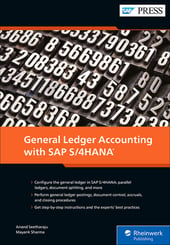Universal Parallel Accounting has become a feature of SAP S/4HANA 2022, and is something that's highly useful in accounting ledgers. This post will teach you what it does and why it's useful across a range of industries.
What Universal Parallel Accounting Offers
With parallel accounting, you'll see that you can start fulfilling your reporting requirements according to different generally accepted accounting principles (GAAPs). It also allows you to add parallel, “management,” valuations, so you can distinguish a legal valuation from a group valuation.
This has been available for some time, but with the addition of Universal Parallel Accounting, you can use a fully harmonized platform to do all of this. It lets you calculate and post values per ledger and currency, along with end-to-end processes.
Use Cases
Why would you want to use Universal Parallel Accounting? There are several different use cases that show how it can be highly useful.
Parallel Valuations – Unconsolidated Views
International companies that need to follow different group and local GAAP accounting standards can make the most of parallel accounting. This was partially available in SAP ERP and SAP S/4HANA, but now is fully available.
Alternative Fiscal Year
Depending on the country they operate in, a company may need to create a fiscal year variant in their accounting for local reporting, which is different to the central reporting on a group level.
Parallel Valuations – Consolidated Views
Group valuation can be needed for steering purposes, where you can see inter-company profits between trading partners eliminated in real-time.
Multi-currency Capabilities
For companies trading in several different countries, their accounting will need to show several different currencies. (Learn about group currencies here.)
Consolidated Vs. Unconsolidated Views
With Universal Parallel Accounting, you have the option to use either consolidated or unconsolidated accounting. What you use will very much depend on your company and your needs.
An unconsolidated view’s focus will be on valuing materials differently, depending on the requirements listed in corporate and local accounting. “If you're working and trading in several different areas, then this is highly useful,” says tech blogger Tim Hutchinson, from Academic Brits. “This extension that has just been introduced is very extensive, and allows you to get a proper end-to-end view of product profitability.”
As for consolidated views, they are designed to help get a group view of inter-company value flows. With Universal Parallel Accounting, inter-company revenues and costs of goods sold (COGS) are eliminated in a separate ledger whenever an inter-company boundary is crossed.
Standard Cost Estimates
With Universal Parallel Accounting, you have more options when it comes to standard cost estimates. When creating a cost estimate, you can create one standard costing estimate using an existing costing variant and use it to update both legal ledgers. You can also use the new costing variants, which update both ledgers if there are significant differences between the two.
The cost estimates will all be kept separate so it's clear what the costs are across all ledgers, making those differences clearer.
Actual Costing
If actual costing is something you use in your business, there are three scenarios where Universal Parallel Accounting will be useful:
- You only use actual costing in the locations that require it, and so you only need to perform a costing run in the codes where the local GAAP requires it.
- Your industry uses actual costing to create costing runs to cover all company code/ledger combinations.
- You want to use actual costing with group valuation, so you need to ensure that costing is active with all company codes in the ledger.
With Universal Parallel Accounting in SAP S/4HANA Finance there are templates available that allow you to do these costing runs, specific to your needs.
Balance Sheet Valuations
In Universal Parallel Accounting you'll be able to create balance sheets based on the values entered into the ledger. When you create a valuation, the tax and commercial prices are removed, and the various balance sheet options are shown as Valuation Alternatives.
This is a very quick overview of Universal Parallel Accounting, and how this update is changing parallel accounting and its use. You should see you have more options, accounting for different markets and needs. This will give you more flexibility in your accounting overall.
This post was originally published 1/2023.




Comments